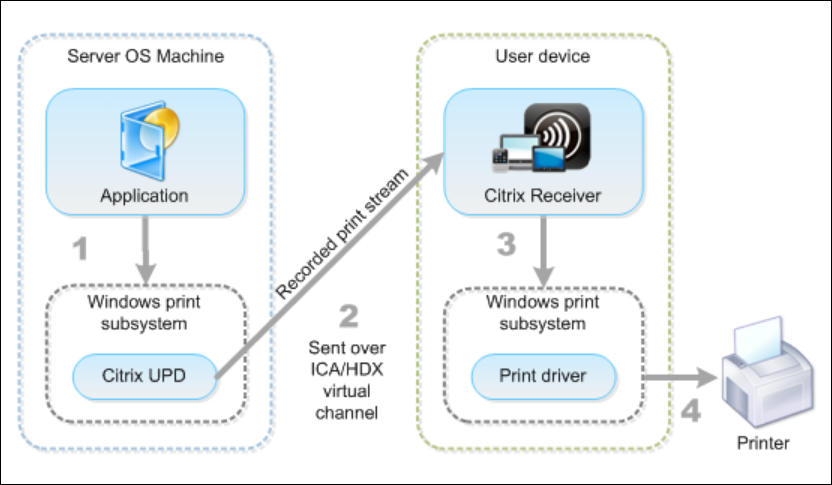-
-
Cloud Connector Standalone Citrix Secure Ticketing Authority (STA) service
-
-
-
-
Citrix Universal™ Print Driver (UPD)
-
-
-
-
This content has been machine translated dynamically.
Dieser Inhalt ist eine maschinelle Übersetzung, die dynamisch erstellt wurde. (Haftungsausschluss)
Cet article a été traduit automatiquement de manière dynamique. (Clause de non responsabilité)
Este artículo lo ha traducido una máquina de forma dinámica. (Aviso legal)
此内容已经过机器动态翻译。 放弃
このコンテンツは動的に機械翻訳されています。免責事項
이 콘텐츠는 동적으로 기계 번역되었습니다. 책임 부인
Este texto foi traduzido automaticamente. (Aviso legal)
Questo contenuto è stato tradotto dinamicamente con traduzione automatica.(Esclusione di responsabilità))
This article has been machine translated.
Dieser Artikel wurde maschinell übersetzt. (Haftungsausschluss)
Ce article a été traduit automatiquement. (Clause de non responsabilité)
Este artículo ha sido traducido automáticamente. (Aviso legal)
この記事は機械翻訳されています.免責事項
이 기사는 기계 번역되었습니다.책임 부인
Este artigo foi traduzido automaticamente.(Aviso legal)
这篇文章已经过机器翻译.放弃
Questo articolo è stato tradotto automaticamente.(Esclusione di responsabilità))
Translation failed!
Citrix Universal™ Print Driver (UPD)
The Citrix Universal Print Driver (UPD) is not a single driver but a technology comprising components on both the server (VDA) and the client (endpoint with Workspace app).
-
Server Component: Installed with the VDA, this includes the actual generic print drivers, such as the “Citrix Universal Printer” (which uses the EMF format) and the “Citrix XPS Universal Printer” (which uses the XPS format), along with support for PDF and PS formats. Its role is to capture the print output generated by applications running on the VDA in a device-independent format.
-
Client Component: Included within the Citrix Workspace™ app installation, this component receives the print stream sent from the VDA. It then interacts with the local Windows printing subsystem on the endpoint device to render the print job using the appropriate device-specific driver installed locally for the target printer.
The following illustration shows the Universal Print driver components and a typical workflow for a printer locally attached to a device -

The primary goal of the UPD is to simplify printer driver management within the Citrix® environment. By using a built-in driver on the VDA, administrators can avoid installing and maintaining potentially hundreds of different manufacturer-specific drivers, which are a common source of instability and conflicts. The UPD aims to be compatible with a wide range of printers, providing a universal interface between the virtual session and the client’s printing capabilities.
Supported Formats
The UPD technology supports several print data formats, allowing flexibility in how print jobs are processed and rendered:
- EMF (Enhanced Metafile Format): The default format used by the “Citrix Universal Printer” driver. It’s a 32-bit Windows-native vector format. Printing using EMF is generally efficient but typically requires a Windows-based client endpoint for rendering.
- XPS (XML Paper Specification): Used by the “Citrix XPS Universal Printer” driver. XPS is an XML-based page description language developed by Microsoft, similar in concept to PDF, designed to be platform-independent.
- PS (PostScript): A page description language developed by Adobe, known for its capabilities in handling complex graphics and typography, often used in publishing and by various printers and multifunction peripherals. Linux clients often utilize PostScript printing with UPD.
- PDF: PDF is a widely used open standard for document exchange. It encapsulates a complete description of a fixed-layout flat document, including the text, fonts, graphics, and other information needed to display it. It is designed to be platform-independent and is ideal for preserving document fidelity across different systems and applications.
Using the UPD offers several potential advantages:
- Reduced Driver Management: Significantly decreases the number of drivers needed on VDA images, simplifying image creation and maintenance.
- Improved Stability: Fewer drivers mean fewer potential conflicts and a lower risk of driver-related spooler crashes or system instability.
- Optimized Print Jobs: Certain UPD formats, particularly EMF, can sometimes result in smaller print job sizes compared to native drivers.
- Advanced Feature Support: The EMF and XPS UPD components can support advanced printing features (like stapling, tray selection) if the native driver on the client exposes these capabilities through Microsoft’s standard Print Capability technology.
Share
Share
In this article
This Preview product documentation is Citrix Confidential.
You agree to hold this documentation confidential pursuant to the terms of your Citrix Beta/Tech Preview Agreement.
The development, release and timing of any features or functionality described in the Preview documentation remains at our sole discretion and are subject to change without notice or consultation.
The documentation is for informational purposes only and is not a commitment, promise or legal obligation to deliver any material, code or functionality and should not be relied upon in making Citrix product purchase decisions.
If you do not agree, select I DO NOT AGREE to exit.